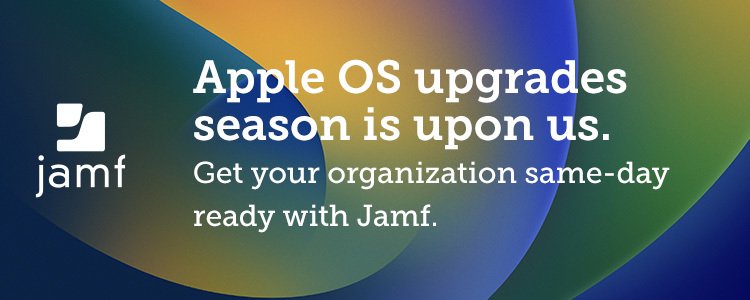Apple at Work is bought to you by Jamf: Get complete management and security solutions for your organization that are enterprise secure, consumer simple, and protect personal privacy with Jamf. Plus you’ll get same-day support for the latest Apple OS upgrades, Today, over 62,000 organizations trust Jamf to manage and secure over 27 million devices.
Apple recently released macOS Ventura to all eligible Macs. Typically, home users rush to upgrade to the latest release in order to enjoy the latest features of a new operating system. That’s understandable as well – Apple has a long beta cycle for new versions of macOS with a developer and public betas. At this point, the new operating system is stable. The problem is that not every other developer or accessory manufacturer is ready, though. So it’s quite common for enterprise customers to use the delay major update feature to give themselves 90 days before it becomes available. One organization announced on the macOS Ventura release date that they were ready to go. SAP’s IT staff didn’t block macOS Ventura, so I chatted with Harald Monihart from SAP about their process.
About Apple @ Work: Bradley Chambers managed an enterprise IT network from 2009 to 2021. Through his experience deploying and managing firewalls, switches, a mobile device management system, enterprise grade Wi-Fi, 100s of Macs, and 100s of iPads, Bradley will highlight ways in which Apple IT managers deploy Apple devices, build networks to support them, train users, stories from the trenches of IT management, and ways Apple could improve its products for IT departments.
Why was it so important to be ready on day one for SAP and macOS Ventura?
In an enterprise context, security is crucial. The best and easiest way to secure a Mac is to have all the latest security vulnerabilities patched with the latest macOS minor and major updates. SAP’s Mac users obviously want to benefit from the latest productivity announcements from Apple. So, there is of course a huge interest among our Mac users to get their hands on Stage Manager or Continuity Camera. Since we are providing applications and tools for our customers on macOS, we also want to make sure that those are supported as early as possible. And internal day-zero support is a key component to achieve that.
Did you run into any major bugs in the process of certifying it over the summer/fall?
The new way that macOS handles notifications of Login Items was a challenge as MDM capabilities on how to manage those were in development during the seeding phase. Major parts of our day-zero support strategy are AppleCare for Enterprise and AppleSeed for IT.
With AppleSeed for IT, we can make sure that we centrally have insights throughout seeding what problems people in the teams are reporting. With AppleCare for Enterprise, we were able to make sure the important ones that ended up being show-stoppers get the right attention within Apple. Big kudos to our dedicated technical account manager and system engineers and all the AppleCare enterprise techs.
When did your testing at SAP begin?
Right after the WWDC keynote. The SAP IT team knows the benefits of giving feedback early in the seeding cycle. Some folks in my team have been running the beta versions on their main device since the WWDC keynote to provide necessary feedback. If I can give a shoutout here: Laura Rösler coordinated all the readiness efforts in my team across the units at SAP and with Apple. That this is a success is mostly her accomplishment.
Apple at Work is bought to you by Jamf: Get complete management and security solutions for your organization that are enterprise secure, consumer simple, and protect personal privacy with Jamf. Plus you’ll get same-day support for the latest Apple OS upgrades, Today, over 62,000 organizations trust Jamf to manage and secure over 27 million devices.

FTC: We use income earning auto affiliate links. More.







